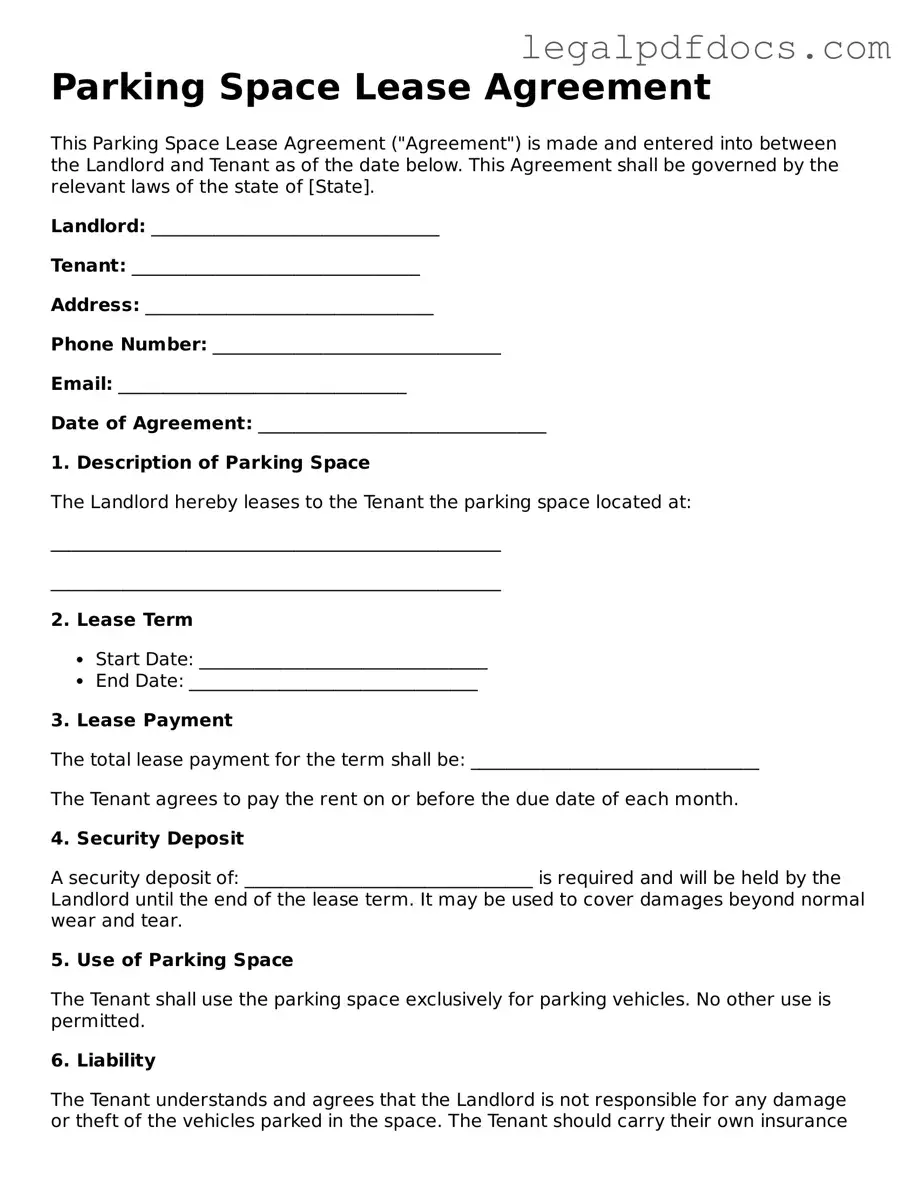Parking Space Lease Agreement Template
A Parking Space Lease Agreement is a legal document that outlines the terms and conditions under which one party can lease a parking space from another. This agreement protects the rights of both the landlord and the tenant, ensuring clarity in the leasing process. If you need to secure a parking space, consider filling out the form by clicking the button below.
Open Parking Space Lease Agreement Editor Here
